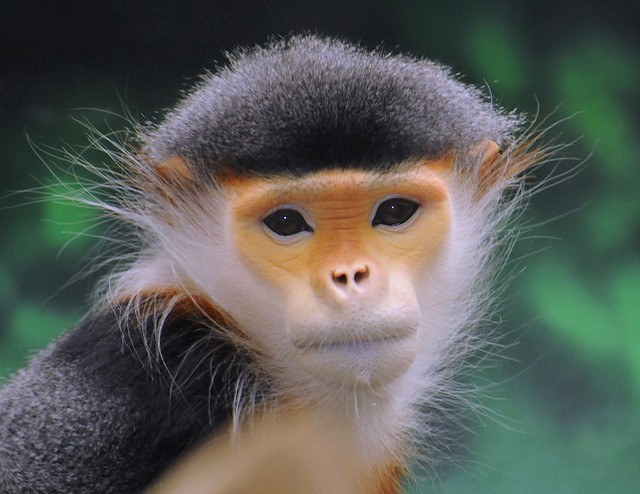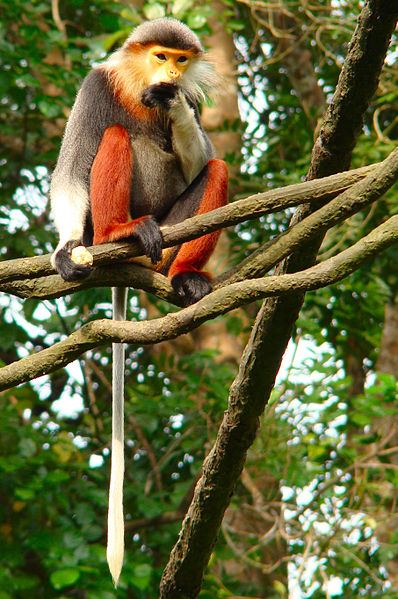Distinguishing features
They are among the most colourful of all primates. This monkey is sometimes called the "costumed ape" for its extravagant appearance. From its knees to its ankles it sports maroon-red "stockings", and it appears to wear white forearm length gloves. Its attire is finished with black hands and feet. The golden face is framed by a white ruff, which is considerably fluffier in males. The eyelids are a soft powder blue. The tail is white with a triangle of white hair at the base. Males of all ages have a white spot on both sides of the corners of the rump patch, and red and white genitals. (Wikipedia)
Size
- Up to 61 cm (Combined head and body only)
Synonyms
Distribution and habitat preferences
They are thought to be found only in north and central Vietnam and Laos.
They are found in a variety of habitats: from lowland to mountainous terrain up to 2,000m, deciduous, primary and secondary rainforests, in the mid to upper levels of the canopy. (Wikipedia)
Chronotypes
Diet
Its diet consists mostly of leaves high in fibers. Belonging to the subfamily Colobinae, or leaf-eating monkeys, it has a large stomach which is divided into sacs containing bacteria that break down the cellulose in the leaves through fermentation, giving the douc its pot-bellied look. This also makes it burp frequently from the resulting gas. It prefers to eat small, young and tender leaves, but will also eat fruit like figs, buds, petioles, flowers, bamboo shoots and seeds. It gets all the liquid and protein it needs from the food it eats and doesn't need to descend to the ground to drink. This monkey eats 50 different plant species but no animal prey. It is a messy and chaotic feeder, dropping much of its food onto the forest floor: old leaves, under-ripe or over-ripe fruits. It eats peacefully together, not quarreling over food, and has been known to share it with others. Often, it will share the same clump of foliage and may even break pieces off and hand them to each other, a type of active generosity that is rare among Old World monkeys. (Wikipedia)

